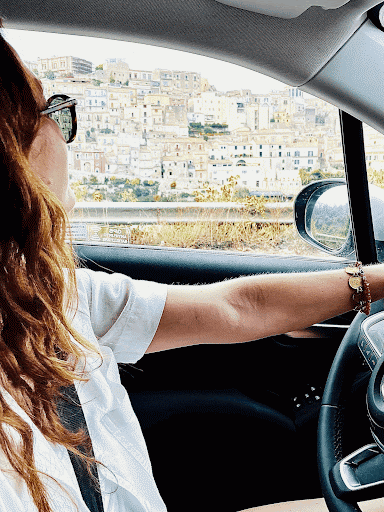|

(getting detoured off Sicilian freeways, through quaint tiny-streeted villages)
2. Plan Your Day Wisely
A well-planned day is key to maximizing your wine tasting experience without feeling overwhelmed. It's tempting to fit in as many wineries as possible, but quality should always trump quantity. Aim for a manageable number—typically two to three wineries per day—to allow yourself ample time to savor each visit without rushing. Also, account for travel time between locations; vineyards can be more spread out than expected, and scenic routes often require additional driving time. I recommend asking the winemaker for directions and travel time, since sometimes GPS estimates in a foreign country can be incorrect! (I learned this the hard way in Sicily when a supposed 2-hour drive took 5 hours and I missed an appointment I had worked hard to schedule).
Don't overlook the essentials—hydration and nourishment. Winery tours and tastings can span hours, making water and snacks indispensable companions. Most importantly, schedule a lunch break or plan a picnic if the winery permits. This not only gives you a chance to relax and reflect on the experience but also helps in moderating alcohol intake. I recommend cushioning your visits by an hour or two of extra time, in case the winemaker starts to open more bottles, or shows you that special block of the vineyard. Being stressed about making the next appointment will never help you enjoy the current one more!
Lastly, weather can be unpredictable, and vineyard conditions vary, so bringing sunscreen, a hat, or even a light jacket ensures you’re prepared for any scenario. Even (and especially) in the summer, I’ll bring a sweater because shorts and tank top never feel good in cellar temperature!
3. Be a great guest
It’s essential to approach each visit with grace, curiosity, and appreciation. Remember, wineries are not just tourist attractions but places where passionate individuals pour their hearts into their craft. Avoid being rude or overly demanding. Avoid getting drunk or loud. Avoid negative feedback on their wines (even if you don’t like something).
Instead, engage with your hosts by asking thoughtful questions and showing genuine interest in their answers. Asking insightful questions is a testament to your appreciation of their work. Inquire about their farming philosophies, the rationale behind growing certain varietals, or their unique winemaking processes. On the drive over to the winery, I like to think of some questions I’m curious about, and if you’re sharing the journey with a partner, it builds anticipation and ads to the excitement of the adventure.
Some examples of great questions are:
- Do you have a specific philosophy when it comes to farming? If so, why?
- This region traditionally produces x but you’re producing y - why is that? or:
- You make wine in the traditional style of this region. Why do these varietals grow so well here?
- What’s your favorite wine that you make and why?
- Do you have a standard winemaking process or do you make each wine differently?
- What’s the oak treatment on this wine? (neutral vs new)
- How long do you age it before release? How long do you recommend waiting before drinking it?
I also recommend taking the time to learn a few key wine terms in the local language. While fluency is not expected, understanding basic terminology can enhance your appreciation of the craft and facilitate more meaningful conversations. It also demonstrates respect and a genuine interest in their winemaking process.
|

